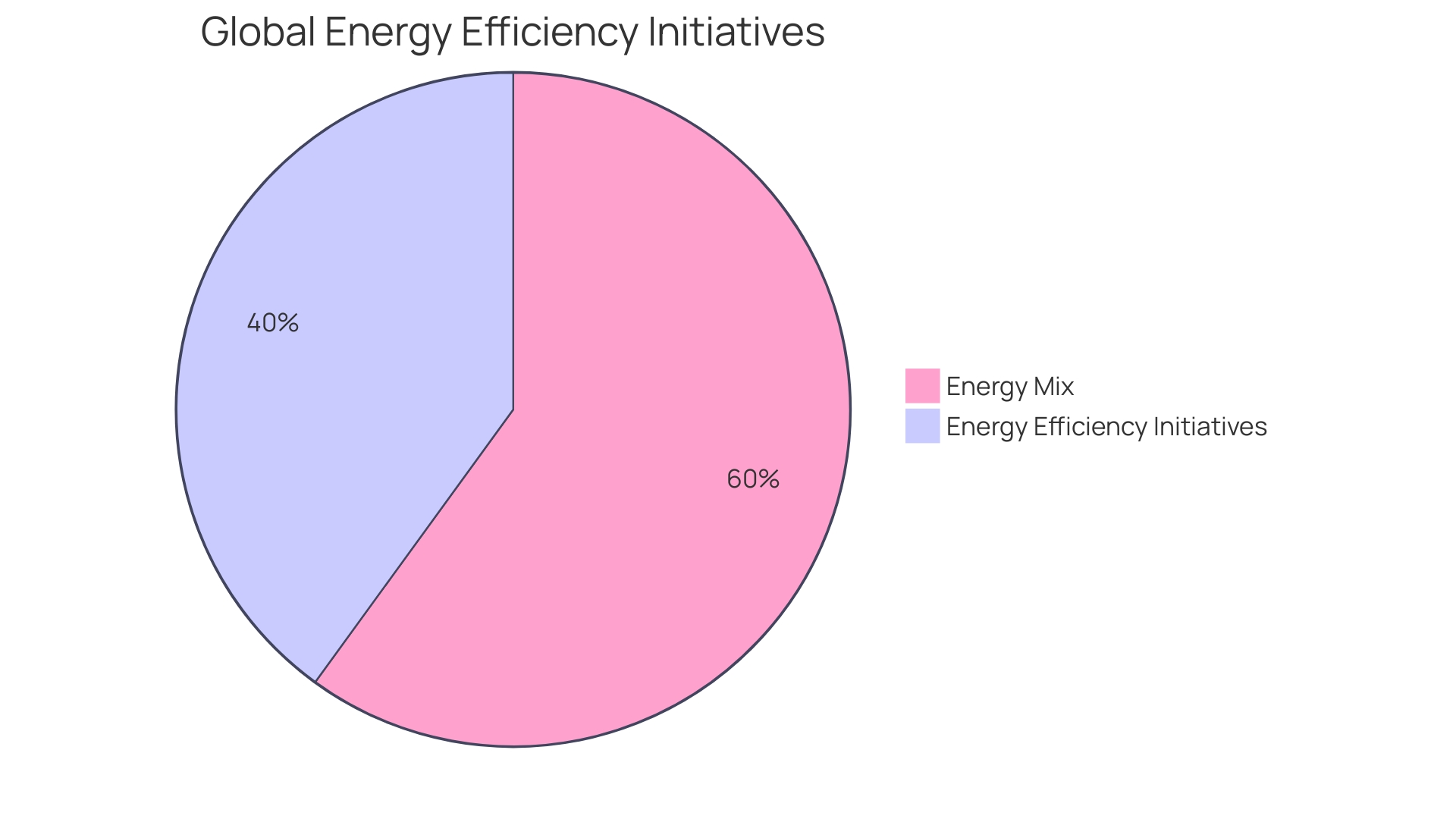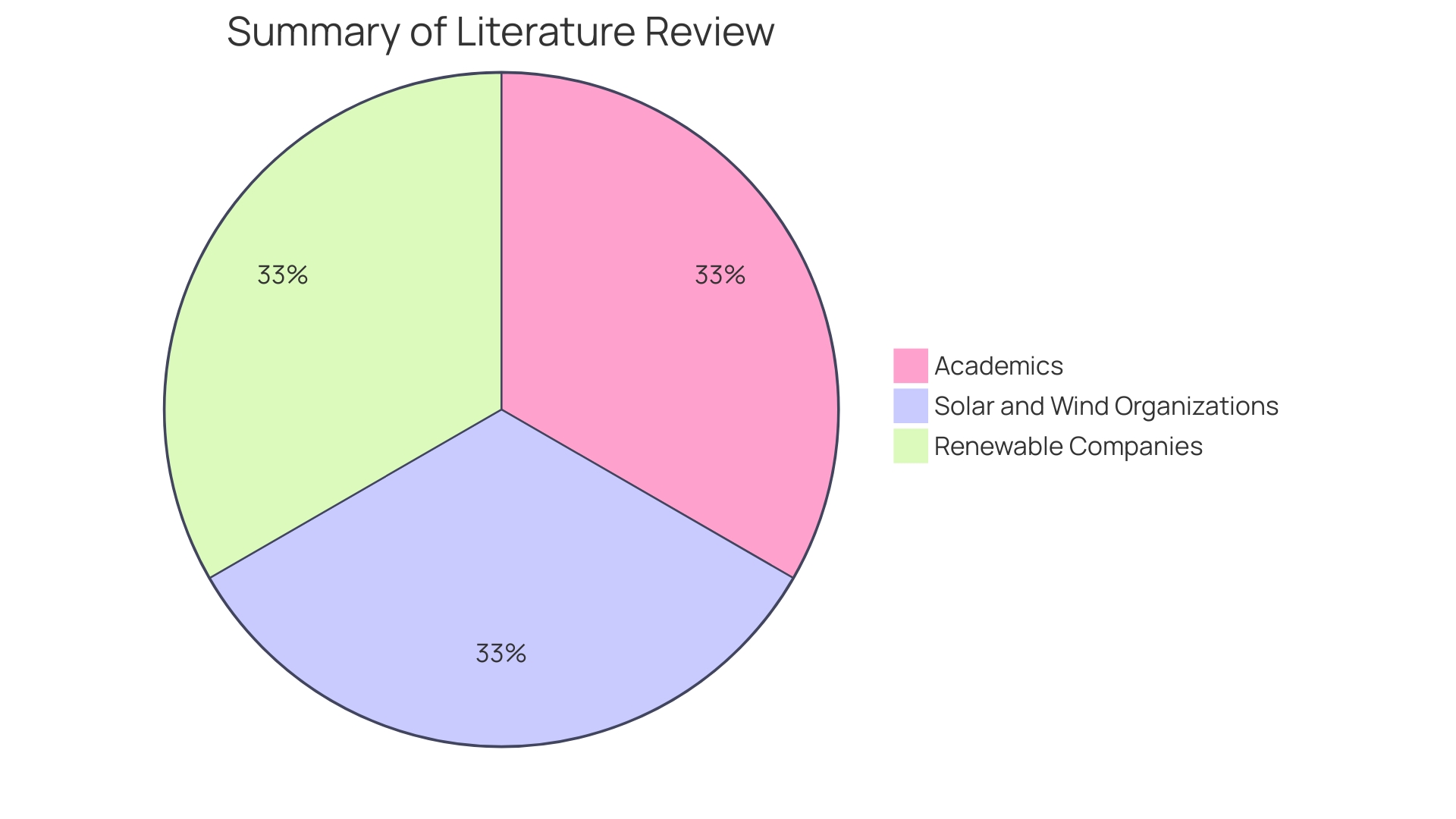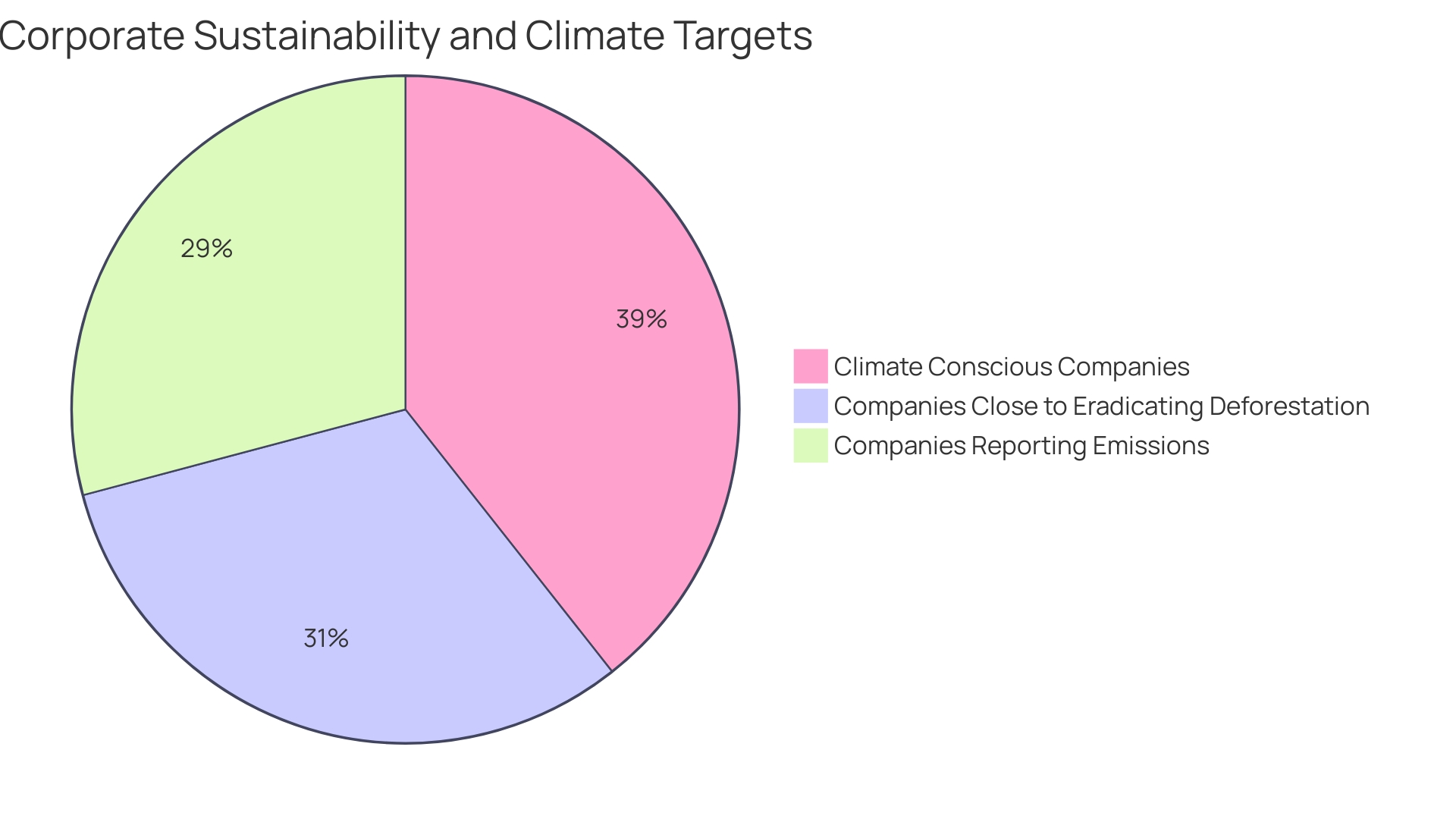Introduction
The oil and gas industry is undergoing a transformative shift, driven by the integration of innovative technologies that are revolutionizing its operational capabilities. Through digitalization, automation, and advanced data analytics, engineering enterprises within this sector are enhancing performance, reducing costs, and strengthening safety protocols. The Internet of Things (IoT) enables real-time monitoring and data analysis, even in remote locations, streamlining operations and facilitating information flow.
The adoption of Artificial Intelligence of Things (AIoT) is revolutionizing emissions detection, reducing human error and environmental impact. Automation and AI are indispensable tools for drilling, monitoring, and maintenance, increasing success rates and ensuring safety. This technological evolution has far-reaching implications, with technology spillovers solving challenges across sectors.
The article explores the industry's shift towards a more connected, intelligent, and responsive framework, setting a new standard for innovation.
Innovative Technologies in the Oil and Gas Industry
The landscape of the oil and gas industry is under a transformative shift, propelled by the integration of cutting-edge technologies that are redefining the sector's operational capabilities. In their pursuit of efficiency and sustainability, engineering enterprises within this sphere are harnessing the power of digitalization, automation, and advanced data analytics to elevate performance, mitigate costs, and bolster safety protocols.
Pioneering in the realm of innovation, the Internet of Things (IoT) is enabling a seamless collection, transmission, and analysis of data across various facets of the industry. This interconnectivity facilitates the real-time monitoring of infrastructure, even in the most remote locations, streamlining operations and enhancing the multidirectional flow of information.
Similarly, the daunting challenge of refractory inspections, traditionally a manual and error-prone process, is now being revolutionized by digital solutions. Companies like ExxonMobil are leading the charge, digitizing these critical inspections to preempt equipment failure, avoid costly downtimes, and maintain continuous operational integrity.
The integration of Artificial Intelligence of Things (AIoT) is setting a new benchmark for emissions detection. Geared towards addressing the multifaceted challenges of fugitive emissions, AIoT is transforming the conventional practices into a technology-centric approach, significantly reducing the risk of human error, environmental impact, and regulatory fines.
Statistics further underscore this technological evolution; where the past relied on educated guesswork for exploration, present-day methods like 3D seismic imaging and advanced drilling are dramatically increasing success rates. Automation and AI are now indispensable tools for drilling, monitoring, and maintenance, streamlining operations and ensuring safety.
As the industry navigates this digital future, the implications are vast, with technology spillovers promising to solve an array of challenges across sectors. For instance, oil and gas drilling technology is now being repurposed for geothermal power systems, showcasing the versatility and far-reaching impact of these advancements.
In summary, the oil and gas sector is experiencing a paradigm shift towards a more connected, intelligent, and responsive operational framework, setting a new standard for innovation in the industry.
Digital Transformation in the Oil and Gas Industry
As the oil and gas industry undergoes a digital metamorphosis, engineering companies are increasingly leaning on advanced technologies to refine their operations and amplify productivity. By harnessing the power of IoT devices, sensor networks, and AI-driven analytics, these enterprises can access real-time data that offers invaluable insights into their operational processes. Such insights empower them to make well-informed decisions, streamline their workflows, and bolster overall efficiency.
For instance, during the Offshore Energy Exhibition & Conference (OEEC) 2023 in Amsterdam, a representative from Huisman emphasized the sector's necessity for digitalization, despite its traditional focus on tangible hardware. The transition towards digitalization is seen as a means to enhance efficiency and shift from reactive to predictive maintenance practices.
The oil and gas industry, noted for its labor-intensive nature and stringent safety requirements, is embracing digital solutions to expedite processes and diminish risks, in response to the declining oil prices. For example, the collaboration between Norwegian company TGS and Brazil's Petrobras on scientific research and technological development underscores a collective endeavor to innovate within the energy sector. This partnership aims to improve exploration and production efficiency, while also focusing on renewable energy and carbon capture technologies.
Understanding the essence of digital transformation is crucial. It's not just about technological upgrades or software implementation; it's a comprehensive strategy to employ technology in fostering innovation, elevating efficiency, and enhancing customer experiences. The retail sector, for instance, may concentrate on omnichannel experiences, marketing personalization, and supply chain optimization as part of its digital transformation objectives.
To successfully navigate this digital shift, it's important to recognize the potential hurdles and establish best practices for integrating these technologies. Moreover, staying informed about future trends and developing methods to gauge the success of digital initiatives is essential for positioning organizations to thrive amidst digital disruption.
In light of these industry shifts, we will explore the challenges, best practices, and future trends in digital transformation, providing insights to measure the success of such initiatives. By the end of our exploration, you will possess a more profound comprehension of the digital landscape and how to steer your organization towards success in an era marked by digital upheaval.
Role of Automation in Oil and Gas Operations
The integration of automation and robotics in the oil and gas sector is revolutionizing the industry by bolstering operational efficiency and safety standards. Advanced automation technologies now facilitate the execution of repetitive tasks, substantially reducing the potential for human error and enhancing overall productivity. Moreover, the incorporation of robotics into daily operations minimizes the likelihood of accidents, particularly in environments that pose high risks to human operatives.
The implementation of automation extends beyond mere task execution; it empowers companies to remotely monitor and manage critical processes. This capability is especially crucial for operations situated in remote or inhospitable locations, as it decreases the necessity for human presence in these areas. The Internet of Things (IoT) is at the forefront of this technological leap, with interconnected devices continuously transmitting valuable data that enable operators to make informed decisions and maintain seamless control over their assets.
In line with the International Society of Automation/International Electrotechnical Commission (ISA/IEC) 62443 standards, the oil and gas industry is adopting a forward-thinking approach to ensure energy production is not only efficient but also secure and sustainable. These comprehensive standards aim to address and mitigate potential security vulnerabilities, underscoring the growing need for skilled engineers and technicians well-versed in automation technologies and industry standards.
Reflecting on the transformative impact of automation, a specialist from a leading energy company stated, "It's been one of the most effective technology deployments I've ever been a part of in my 15-year career." The deployment of submersible robots for tank inspections exemplifies the profound benefits of this technology, including the reduction of downtime, enhanced worker safety, and the acquisition of superior data quality for decision-making.
As the industry evolves, the use of digital technology for methane emission monitoring and the prediction of equipment failure is gaining prominence. With the potential to predict equipment failures for a significant percentage of wells, companies like Baker Hughes are setting a new standard in operational efficiency.
Statistics further underline the industry's shift towards digitalization, with companies like ExxonMobil digitizing refractory inspections to mitigate the risks associated with manual inspections in confined spaces. Such innovations are not only improving inspection accuracy but are also reducing downtime and financial losses associated with traditional methods.
In summary, the strategic application of automation in the oil and gas industry is not just a trend but a necessity, ensuring the sector remains competitive and capable of meeting the ever-increasing global demands for energy efficiency, energy security, and environmental stewardship.

Importance of Sustainable Practices in the Oil and Gas Industry
As the oil and gas industry confronts the dual challenges of meeting global energy demand and reducing environmental impact, sustainable practices are becoming increasingly vital. Companies are leveraging extensive research, including academic work and stakeholder insights from the renewable sector, to inform their adoption of eco-friendly strategies. In alignment with principles such as waste elimination, resource circulation, and enhanced efficiency, these companies are integrating sustainable drilling methods, investing in renewable energy, and implementing robust waste management protocols.
The shift towards sustainability is further illustrated by leading industry players like BP Inc., which has committed to achieving net-zero emissions by 2050, a goal that encompasses substantial reductions in oil and gas production. This trend reflects a broader industry acknowledgment, as emphasized by Fatih Birol of the International Energy Agency, that inaction is not an option in the face of clean energy transitions.
Furthermore, environmental expenditures are playing a critical role, with businesses investing in pollution prevention, biodiversity restoration, and renewable energy production. These expenditures encompass both operating and capital costs, demonstrating the industry's commitment to long-term sustainability goals.
This strategic pivot towards sustainable operations not only helps oil and gas companies adhere to stringent environmental regulations but also positions them as key players in the global transition to cleaner energy. By adopting these practices, they can enhance their reputational standing and appeal to an increasingly environmentally conscious investment community.

Challenges and Opportunities in the Transition to Renewable Energy
As the world pivots towards renewable energy, oil and gas companies stand at a crossroads, facing the dual challenge of declining fossil fuel demand and the urgent need to integrate into the burgeoning renewable sector. These companies are uniquely positioned to make a transformative impact on the renewable landscape by capitalizing on their extensive expertise, infrastructure, and global reach. The energy transition necessitates a multi-faceted overhaul of the current energy system, which is vast, intricate, and has evolved over centuries. It encompasses the production and consumption of energy, serving billions and is heavily reliant on high-performing, energy-dense fuels that are easily dispatchable.
This transition involves reimagining seven key domains: power generation, mobility, industry, buildings, raw materials, new fuel types, and carbon management. Each domain faces its own set of physical challenges, from developing low-emission technologies to scaling infrastructure and managing the interdependencies across the system. The task ahead is monumental, with estimates suggesting that the shift to a carbon-free energy supply could cost hundreds of trillions of dollars, requiring a significant portion of global economic output for decades.
Oil and gas companies could play an instrumental role in addressing these challenges. With the global population and economy growing, energy demands will only increase. Southeast Asia, for example, is projected to see an 88% increase in gas demand by 2050. Furthermore, the International Energy Agency's Executive Director, Fatih Birol, emphasizes that inaction is not an option for energy companies. The industry must adapt to ensure both its long-term survival and its ability to meet consumer needs.
In this context, the oil and gas sector has a pivotal opportunity to contribute to the energy transition. By diversifying into renewable energy investments, these companies can not only adapt to the evolving market dynamics but also play a central role in steering the world towards a more sustainable energy future. The transformation is in its nascent stages, and with the right strategic planning and investment in innovation, oil and gas companies can become key enablers of the energy transition.
Case Studies: Successful Implementation of Innovative Solutions
The oil and gas sector is witnessing a transformation as companies like Rivian and TotalEnergies lead by example, showcasing that innovation paired with sustainability can yield significant improvements. Rivian, an electric vehicle pioneer, is steering the industry towards a greener future with its commitment to net-zero emissions by 2040. This ambition extends to all facets of their operations, with a focus on sustainable raw material sourcing and minimizing waste across the board. Their global operations require a high degree of coordination across different U.S. states, from design in California to manufacturing in Illinois. Despite the challenge of dispersed teams, Rivian's innovative approach emphasizes rapid, sustainable processes.
TotalEnergies, operating in nearly 130 countries with over 100,000 employees, embeds sustainability into every aspect of its business. Its subsidiary, TotalEnergies Digital Factory, is a testament to its digital transformation efforts, having launched over 80 solutions in more than 25 countries since 2020. Through a reliance on APIs, TotalEnergies is modernizing legacy systems and paving the way for more efficient operations.
The integration of IoT technology in the industry is another aspect of this innovation, enabling companies to gather and utilize data in unprecedented ways to enhance efficiency and sustainability. Companies like Saipem are also embracing this shift, focusing on the value of diverse backgrounds and leadership styles to drive sustainable engineering solutions. Saipem's dedication to creating value for its stakeholders while adhering to environmental, social, and governance principles sets a benchmark for others in the industry.
These case studies reflect a broader trend: successful companies are those that can navigate complex coordination challenges, as noted by industry experts. They understand that solving persistent challenges often requires a multifaceted team with diverse skills. As the energy industry continues to evolve, these examples provide a roadmap for others to follow, emphasizing the importance of innovation, sustainability, and strategic collaboration.

Conclusion
The oil and gas industry is experiencing a transformative shift driven by innovative technologies. Digitalization, automation, and advanced data analytics are enhancing performance, reducing costs, and improving safety protocols. The integration of the Internet of Things (IoT) enables real-time monitoring and data analysis, streamlining operations and facilitating information flow.
Artificial Intelligence of Things (AIoT) is revolutionizing emissions detection, reducing human error and environmental impact. Automation and AI are indispensable tools for drilling, monitoring, and maintenance, ensuring safety and increasing success rates.
As the industry undergoes a digital metamorphosis, advanced technologies like IoT devices, sensor networks, and AI-driven analytics are refining operations and amplifying productivity. Real-time data empowers well-informed decision-making, streamlined workflows, and overall efficiency.
The integration of automation and robotics is revolutionizing the oil and gas sector, improving operational efficiency and safety. Automation reduces human error and enhances productivity, while robotics minimizes accidents in high-risk environments.
Sustainable practices are becoming increasingly vital as the industry confronts the challenges of meeting global energy demand and reducing environmental impact. Oil and gas companies are adopting eco-friendly strategies to adhere to regulations and position themselves as key players in the transition to cleaner energy.
Oil and gas companies have the opportunity to make a transformative impact on the renewable energy landscape. With their expertise, infrastructure, and global reach, they can contribute to the energy transition by diversifying into renewable energy investments.
Successful companies in the industry showcase the power of innovation and sustainability. They navigate complex coordination challenges and emphasize the importance of collaboration. These examples provide a roadmap for others, highlighting the significance of innovation, sustainability, and strategic collaboration.
In conclusion, the oil and gas industry is undergoing a transformative shift towards a more connected, intelligent, and responsive framework. Innovative technologies are revolutionizing operational capabilities, enhancing performance, reducing costs, and strengthening safety protocols. This shift has far-reaching implications, solving challenges across sectors and setting a new standard for innovation.




